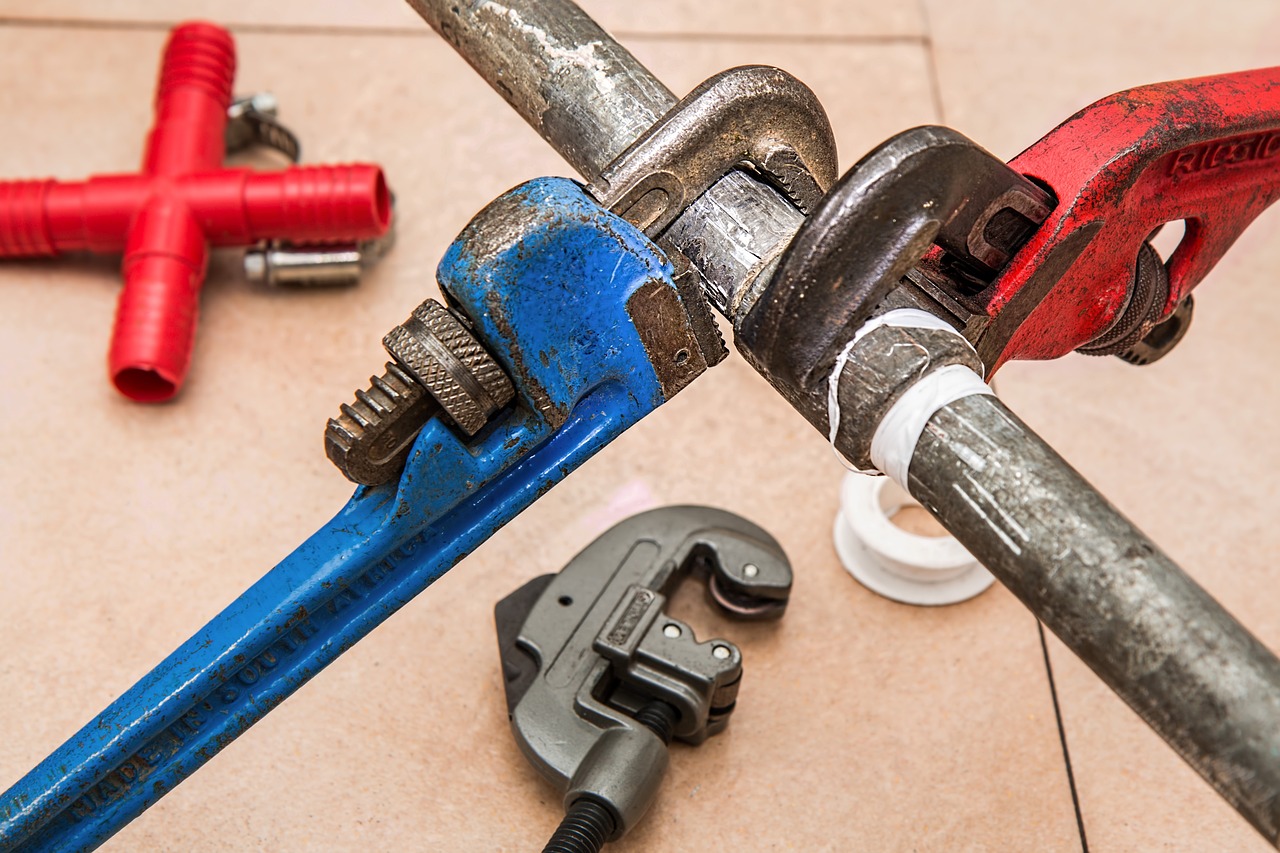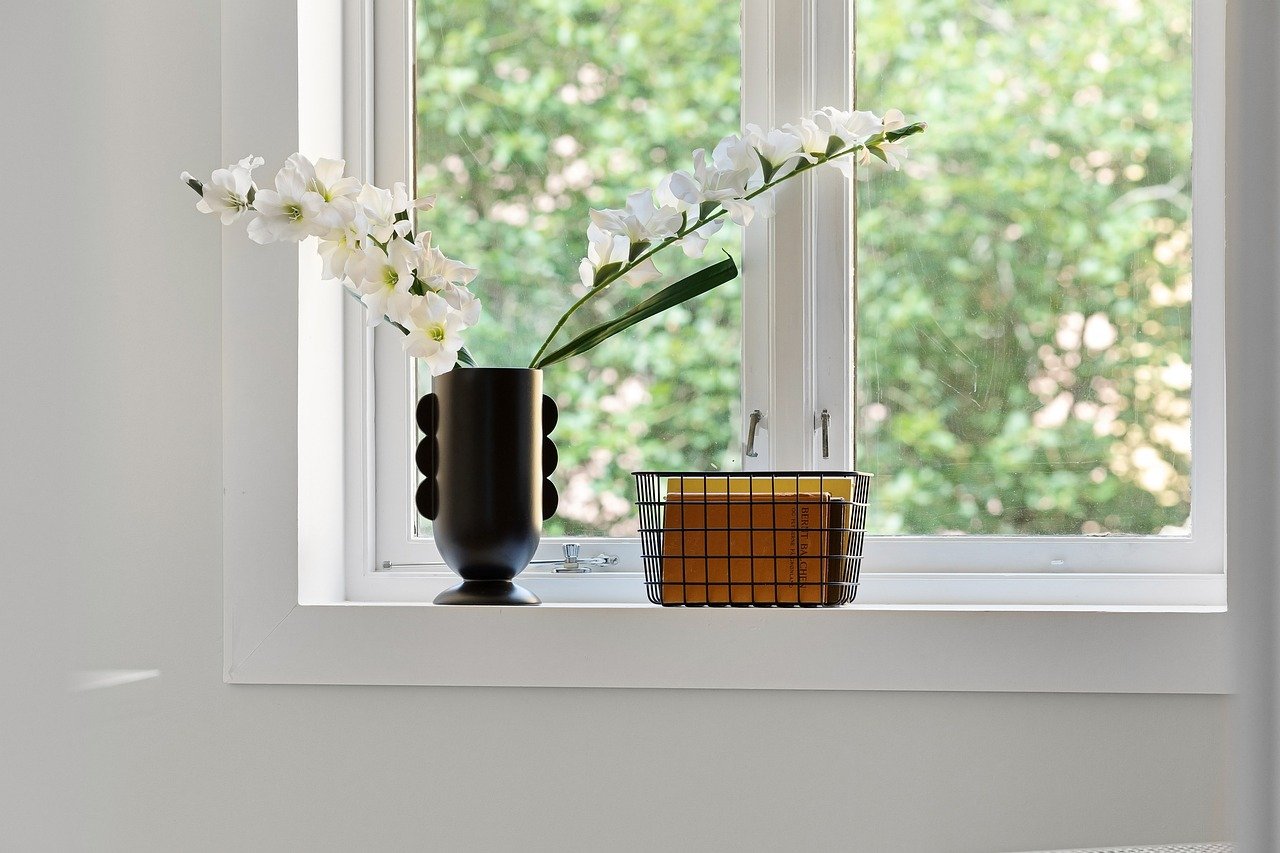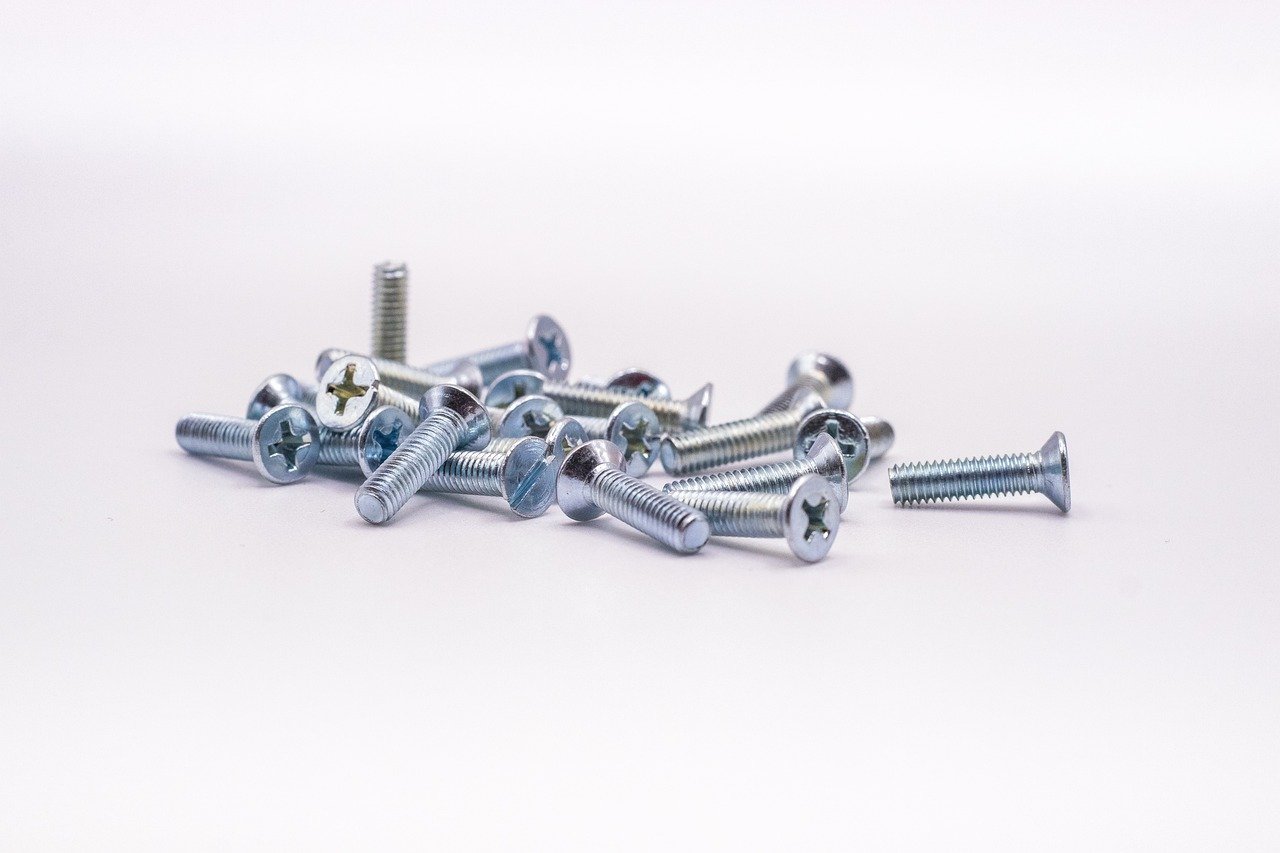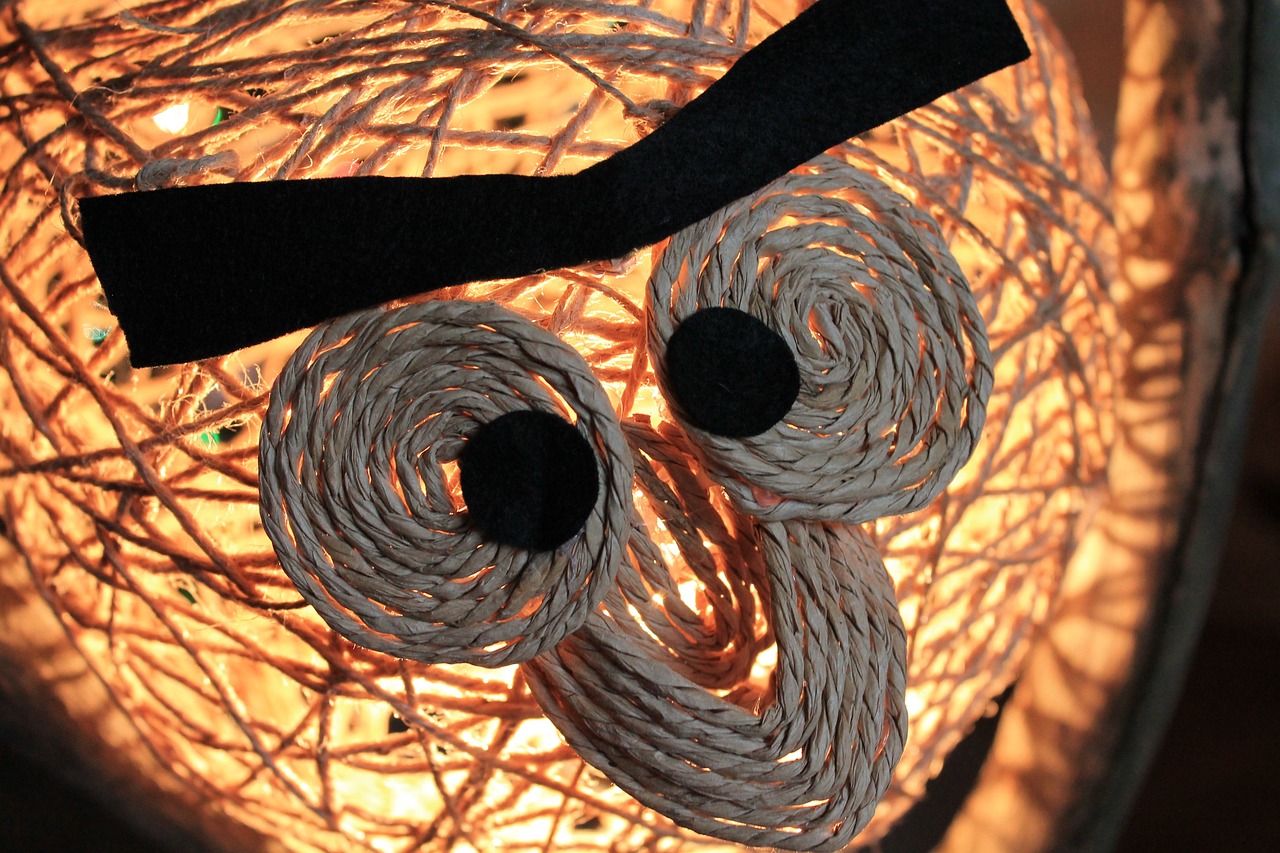How to Convert an Old Ladder into a DIY Shelf
This article explores the creative process of transforming an old ladder into a stylish and functional shelf. Discover step-by-step instructions, design tips, and inspiration for your own DIY project.
When it comes to selecting the perfect ladder for your DIY shelf project, there are a few key factors to keep in mind. First, consider the size of the ladder. You want something that will fit comfortably in your space without overwhelming it. A smaller ladder can work wonders in a cozy nook, while a larger one can serve as a stunning focal point in a bigger room. Next up is the material. Wooden ladders offer a rustic charm, while metal ones can bring a modern edge to your decor. Lastly, think about the style—do you want a vintage feel or something more contemporary? Finding the right ladder is crucial as it sets the tone for your entire project.
Before diving into the conversion, proper preparation is essential. This process not only ensures durability but also enhances the final look of your shelf. Start by giving your ladder a good clean. You can use a simple mixture of soap and water to wipe away any dirt and grime. For those stubborn spots, a gentle scrub with a soft brush can do wonders. Once it’s clean, move on to sanding. This step is vital for achieving a smooth surface that’s visually appealing and safe to touch. Use medium-grit sandpaper to start, followed by finer grit for a polished finish. Lastly, don’t forget to apply a wood treatment. This will protect your ladder from moisture and pests, ensuring your shelf remains in great condition over time.
Effective cleaning techniques can remove dirt and grime from your ladder. Here are some methods to restore its original appearance:
- Soap and Water: A simple solution for light cleaning.
- Vinegar and Water: Great for tackling tougher stains.
- Soft Brush: Perfect for scrubbing away dirt without damaging the wood.
Sanding the ladder helps create a smooth surface, making it more visually appealing. It’s not just about looks; a smooth finish can also prevent splinters! Use a sanding block or an electric sander for larger areas, and remember to wear a mask to avoid inhaling dust. Start with a coarser grit and gradually move to finer grits to achieve that flawless finish.
Wood treatment is essential for protecting your ladder from moisture and pests. There are several products available, including sealants and stains that can enhance the wood’s natural beauty while providing a protective barrier. Look for treatments that are specifically designed for the type of wood your ladder is made from to ensure the best results.
Once your ladder is prepared, it’s time to get creative with your shelf layout. Think about how you want to use the space. Will it be for books, plants, or decorative items? Consider incorporating various shelf heights to add visual interest. You can also play with different materials for the shelves themselves—think reclaimed wood for a rustic touch or glass for a modern feel. The key is to create a layout that reflects your personality and complements your home decor.
Choosing the right finish can dramatically change the look of your ladder shelf. Whether you want a vibrant pop of color or a subtle stain, the options are endless. For a cohesive look, consider how the finish will tie into your existing decor. You can go for a bold color that makes a statement or a soft stain that highlights the wood’s natural grain.
Selecting the right colors is essential for a cohesive look. Explore color palettes that complement your existing decor while adding a unique touch to your shelf. For example, if your room features earthy tones, consider a rich walnut stain or a muted green paint. If you’re feeling adventurous, try a bright yellow or teal to add a splash of fun!
Different finishing techniques can enhance the visual appeal of your shelf. Learn about various methods such as spray painting for an even coat, brush techniques for a more textured look, and distressing methods to give your shelf a vintage feel. Each technique has its charm, so choose one that aligns with your design vision.
Proper installation ensures your ladder shelf is safe and functional. It’s important to securely position your shelf to avoid any accidents. Make sure to use appropriate hardware for wall mounting if that’s your plan. A level is your best friend here to ensure everything is straight and even.
Wall mounting can provide extra stability for your ladder shelf. Explore various mounting options such as brackets, screws, or even decorative chains for a unique look. Ensure that the hardware you choose can support the weight of the items you plan to display.
Once installed, styling your shelf is the final touch. Arrange books, plants, and decorative items in a way that creates an inviting display. Consider using varying heights and textures to keep the eye moving. Adding personal touches, like photos or souvenirs, can make your shelf a true reflection of your personality.
Q: Can I use a metal ladder instead of a wooden one?
A: Absolutely! Metal ladders can offer a sleek, modern look. Just make sure to choose a sturdy one and consider how you’ll style it.
Q: How do I ensure my shelf is safe for heavy items?
A: Use appropriate mounting hardware and ensure the ladder is securely fastened to the wall. Distribute weight evenly across the shelves.
Q: What if my ladder is too tall for my space?
A: You can always cut it down to size or use only a portion of it as a shelf. Get creative!

Choosing the Right Ladder
When embarking on your DIY journey to transform an old ladder into a stylish shelf, is a pivotal first step. It's not just about grabbing any old ladder you find in the garage; you need to consider several factors to ensure that your final product not only looks good but also serves its purpose well. Think of this as laying the foundation for your creative project. Just like a house needs a solid base, your shelf needs the right ladder to stand tall and proud.
First off, consider the size of the ladder. You want to ensure that it fits well in the space you have designated for your shelf. A ladder that’s too tall might overwhelm a small room, while one that’s too short may not provide the storage you need. Measure your wall space and visualize how the ladder will fit within that area. A good rule of thumb is to leave some room above and below the ladder for a balanced look.
Next, the material of the ladder plays a crucial role in both aesthetics and durability. Wooden ladders offer a rustic charm that many find appealing, while metal ladders can lend a more industrial vibe. Consider what style complements your home decor. If you’re leaning towards a farmhouse look, a wooden ladder might be your best bet. On the other hand, if your home is more modern, a sleek metal ladder could be the perfect choice.
Don’t overlook the style of the ladder either. Ladders come in various designs, from traditional A-frames to more contemporary styles. Each type brings its own character, so think about how you want your shelf to resonate with your home’s overall theme. For instance, a vintage ladder can add a touch of nostalgia, while a minimalist ladder can keep things sleek and modern. It’s all about what feels right for your space.
Lastly, consider the weight capacity of the ladder. If you plan on loading your shelf with books, plants, or decorative items, you want to ensure that the ladder can handle the weight. Check the manufacturer's specifications if available, or do a little research on the type of ladder you’re considering. A sturdy ladder will not only support your items but also provide peace of mind knowing that your creation is safe and secure.
In summary, when choosing the right ladder for your DIY shelf project, keep these key factors in mind:
- Size: Ensure it fits your space.
- Material: Choose between wood or metal based on your style.
- Style: Pick a design that complements your home decor.
- Weight Capacity: Make sure it can hold your intended items.
By taking the time to carefully select the right ladder, you’re setting the stage for a successful and enjoyable DIY project. So, roll up your sleeves, get creative, and let your imagination run wild as you embark on this exciting journey!

Preparing the Ladder
Before diving into the transformation of your old ladder into a stunning DIY shelf, it's essential to prepare the ladder properly. This preparation phase is not just a step; it's a crucial part of the process that can significantly impact the durability and aesthetic of your final product. Think of it like preparing a canvas before painting a masterpiece; the better the preparation, the more beautiful the outcome!
First and foremost, you’ll want to clean the ladder thoroughly. Years of dust, grime, and possibly even some stubborn cobwebs can accumulate on your ladder, especially if it has been stored away in a garage or shed. Use a mixture of warm water and mild detergent to wipe it down. For those hard-to-reach spots, a scrub brush or even an old toothbrush can work wonders. Once cleaned, allow it to dry completely before moving on to the next step.
Effective cleaning techniques can make a world of difference. Here are a few methods you might consider:
- Soap and Water: A simple solution that works for most dirt and grime.
- Vinegar Solution: For tougher stains, a mix of vinegar and water can help break down stubborn spots.
- Pressure Washer: If your ladder is particularly dirty and made of a sturdy material, a pressure washer can give it a fresh start.
After cleaning, the next step is sanding the ladder. This process is vital for achieving a smooth surface that not only looks good but also feels good. When sanding, focus on any rough edges or splintered areas to ensure safety and enhance the overall appearance. Using a power sander can speed up the process, but a hand sander will give you more control, especially in tight spots. Aim for a fine-grit sandpaper to avoid leaving scratches on the wood.
Sanding the ladder helps to create a smooth surface, making it more visually appealing. The best tools for this job include:
- Orbital Sander: Great for large flat areas.
- Detail Sander: Perfect for corners and intricate designs.
- Sandpaper: Always keep a few sheets of different grits on hand for a variety of surfaces.
Once you’ve achieved a smooth finish, it’s time to apply wood treatment. This step is essential for protecting your ladder from moisture and pests, ensuring that your shelf remains in excellent condition over time. There are various wood treatments available, including sealants and stains, which can enhance the natural beauty of the wood while providing a protective layer.
When selecting a wood treatment, consider the following options:
- Polyurethane: A clear finish that adds durability and shine.
- Wood Stain: Adds color while highlighting the wood grain.
- Linseed Oil: A natural option that nourishes the wood and provides a subtle sheen.
Before applying any treatment, ensure the ladder is completely dry and free of dust. Use a brush or cloth to apply the treatment evenly, following the manufacturer’s instructions for best results. Allow it to dry thoroughly before moving on to the next steps of your DIY shelf project. With a well-prepared ladder, you’re already on your way to creating something truly special!

Cleaning Techniques
When it comes to transforming an old ladder into a DIY shelf, the first step is ensuring that your ladder is clean and ready for the makeover. After all, you wouldn’t want to start a beautiful project on a dusty foundation, right? Cleaning the ladder might seem like a mundane task, but it’s actually a crucial part of the process that can significantly affect the final outcome of your shelf. So, let’s dive into some effective cleaning techniques that will restore your ladder’s original charm.
Start by giving your ladder a thorough inspection. Look for any signs of dirt, grime, or even mildew that may have accumulated over the years. A simple solution of warm water and mild detergent can do wonders. Grab a sponge or a soft cloth and dip it into the soapy water. Wipe down every rung and side of the ladder, paying special attention to any crevices where dirt likes to hide. This step not only cleans the surface but also prepares it for further treatments.
For those tougher spots, you might need a bit more muscle. A soft-bristle brush can help dislodge stubborn dirt without damaging the wood. If you encounter any mold or mildew, consider using a mixture of vinegar and water as a natural cleaning solution. Just spray it on the affected areas, let it sit for a few minutes, and then scrub it away. This will not only clean your ladder but also help prevent any future growth.
Once you’ve cleaned the ladder, it’s important to rinse it well with clean water to remove any soap or cleaning solution residue. After rinsing, let the ladder dry completely in a well-ventilated area. This is crucial because moisture trapped in the wood can lead to rot or warping, which would be a disaster for your DIY shelf project.
To give you a clearer idea, here’s a quick table summarizing the cleaning techniques:
| Cleaning Method | Materials Needed | Steps |
|---|---|---|
| Soap and Water | Warm water, mild detergent, sponge | Mix solution, wipe down, rinse |
| Brush Cleaning | Soft-bristle brush | Scrub tough spots |
| Mold Removal | Vinegar, water, spray bottle | Spray, let sit, scrub, rinse |
By following these cleaning techniques, you’ll ensure that your old ladder is not only clean but also ready to become a stunning shelf that will elevate your home decor. Remember, a little effort in the cleaning process can lead to a beautiful and long-lasting DIY project!

Sanding for Smoothness
When it comes to transforming your old ladder into a stunning DIY shelf, one of the most crucial steps is sanding. This process not only enhances the visual appeal of your shelf but also ensures that the surface is safe to touch. Imagine running your fingers along a beautifully smooth finish—doesn’t that sound inviting? To achieve this, you’ll need to gather a few tools and follow some simple techniques.
First, let’s talk about the tools you’ll need. A good quality sandpaper is essential, and you might want to have a few different grits on hand. Starting with a coarser grit (like 80 or 100) can help remove any rough patches, splinters, or old paint. Once you’ve tackled the rough spots, switch to a finer grit (like 220) to give your ladder that silky smooth finish you’re aiming for. If you’re feeling adventurous, an electric sander can save you time and effort, but be sure to keep it moving to avoid gouging the wood.
To begin sanding, make sure your ladder is clean and dry. Start with the coarser grit sandpaper and work in the direction of the wood grain. This is important because sanding against the grain can create scratches that detract from the overall look. As you sand, you’ll notice the wood becoming smoother and more refined. Don’t forget to pay special attention to the corners and crevices, as these areas can often be overlooked. A sanding sponge or even a small piece of sandpaper can be useful for these tight spots.
Once you’ve finished with the coarse grit, it’s time to switch to the finer grit. This step is where the magic happens! As you glide the sandpaper over the surface, you’ll feel the difference immediately. The wood will become soft to the touch, and you’ll be one step closer to achieving that elegant shelf. After sanding, it’s a good idea to wipe down the ladder with a damp cloth to remove any dust particles that could interfere with your finish.
In summary, sanding is a vital part of the DIY shelf-making process. It may seem tedious, but the results are absolutely worth it. Not only will your ladder look stunning, but it will also be safe to use. So grab your sandpaper, put on some music, and let’s get sanding!

Applying Wood Treatment
When it comes to transforming your old ladder into a stunning DIY shelf, is a crucial step that shouldn't be overlooked. Think of wood treatment as the protective armor for your shelf; it shields the wood from moisture, pests, and the wear and tear of everyday life. Without proper treatment, your beautiful creation could quickly turn into a faded memory, succumbing to the elements. So, let’s dive into the world of wood treatment and explore how to keep your ladder shelf looking great for years to come!
First things first, you need to choose the right wood treatment product. There are several options available, each with its own set of benefits. Here’s a quick rundown of some popular choices:
| Product Type | Description | Best For |
|---|---|---|
| Wood Sealant | Forms a protective barrier against moisture. | Indoor and outdoor projects. |
| Wood Stain | Adds color while enhancing grain visibility. | Aesthetic appeal. |
| Wood Preservative | Prevents rot and pest infestation. | Outdoor use, especially in humid environments. |
Once you've selected the right product, it’s time to prepare the ladder for treatment. Start by ensuring the wood is clean and dry. If you've just finished sanding, give it a good wipe down to remove any dust particles. You can use a damp cloth for this purpose, but make sure the wood dries completely before proceeding. After that, apply the treatment using a brush or a cloth, following the manufacturer's instructions. It's essential to apply an even coat to avoid streaks and ensure maximum protection.
For added durability, consider applying multiple coats. Each coat should be allowed to dry thoroughly before adding the next. This process not only enhances the protective qualities of the treatment but also deepens the color if you’re using a stain. Remember, patience is key! Allowing adequate drying time will pay off in the long run.
Lastly, don't forget to ventilate your workspace! Many wood treatments contain chemicals that can be harmful if inhaled. Open windows, use fans, or wear a mask to ensure you're working safely. Once your ladder has been treated and dried, you'll be left with a beautiful, functional shelf that not only looks great but is also built to last.
- What type of wood treatment should I use for indoor vs. outdoor shelves?
For indoor shelves, a wood sealant or stain is usually sufficient. For outdoor shelves, opt for a wood preservative that protects against moisture and pests.
- How often should I reapply wood treatment?
It depends on your environment. Generally, it's a good idea to reapply every 1-3 years, especially if the shelf is exposed to the elements.
- Can I paint over wood treatment?
Yes, but make sure the treatment is completely dry before applying paint. This will ensure better adhesion and a smoother finish.

Designing Your Shelf Layout
Once you've prepped your old ladder, it’s time to dive into the fun part: designing your shelf layout! This is where your creativity can truly shine. Think of your ladder as a blank canvas, waiting for your artistic touch. You want to create a space that not only serves a functional purpose but also showcases your unique style. So, how do you go about it?
First, consider the functionality of your shelf. What do you plan to store or display? Is it going to hold books, plants, or perhaps your collection of vintage knick-knacks? Understanding the purpose of your shelf will guide your layout decisions. For instance, if you're planning to display books, you might want to arrange the shelves at varying heights to accommodate different book sizes. On the other hand, if you're showcasing decorative items, you might prefer a more symmetrical arrangement that creates a pleasing visual balance.
Next, think about spacing. How much space do you want between each shelf? Too much space can make the shelf look sparse, while too little can make it feel cluttered. A good rule of thumb is to leave about 12 to 15 inches between each shelf for books and around 10 inches for smaller decorative items. This spacing not only provides a practical solution but also creates a sense of rhythm in your design.
Now, let's talk about decorative elements. Incorporating items like plants, picture frames, or decorative boxes can add personality to your shelf. When arranging these items, consider using the rule of thirds. This principle suggests that you should divide your shelf into three equal parts and aim to place your items along these lines or at their intersections. This approach creates a more dynamic and interesting look.
Here’s a quick visual breakdown of how you might arrange your items:
| Item Type | Arrangement Tips |
|---|---|
| Books | Vary heights and orientations (some vertical, some horizontal). |
| Plants | Place taller plants at the top and smaller ones below. |
| Decorative Items | Group in odd numbers for visual interest. |
Lastly, don’t forget about lighting. If your ladder shelf is in a well-lit area, you might want to highlight certain pieces with small LED lights or fairy lights. This not only enhances the aesthetic but also creates a cozy atmosphere.
In conclusion, designing your shelf layout is all about balancing functionality with creativity. Take your time to experiment with different arrangements until you find the one that truly resonates with your style. Remember, this is your space, so let your personality shine through!

Painting or Staining Options
When it comes to giving your old ladder a new lease on life, choosing the right finish can dramatically change its appearance and enhance the overall aesthetic of your DIY shelf. Whether you prefer a sleek modern look or a rustic charm, the options for painting or staining your ladder are plentiful. It’s not just about slapping on some color; it’s about creating a piece that complements your home decor while showcasing your personal style.
Before diving into the painting or staining process, consider the material of your ladder. Wooden ladders are generally easier to work with than metal ones, as they absorb stains and paints better. If you're working with a metal ladder, you might want to use spray paint specifically designed for metal surfaces to ensure a smooth, even finish.
One of the first decisions you’ll need to make is whether to paint or stain your ladder. Painting offers a wide range of colors and finishes, allowing you to completely transform the look of the ladder. You can opt for a bold, vibrant hue to make a statement or a soft pastel to create a more subdued effect. On the other hand, staining allows the natural grain of the wood to shine through, providing a warm and inviting look. Stains come in various shades, from light to dark, and can be used to enhance the natural beauty of the wood while offering a protective layer.
Here are some popular options you might consider:
- Chalk Paint: Ideal for a matte finish, chalk paint can give your ladder a vintage or shabby chic look.
- Oil-Based Stains: These penetrate the wood deeply and provide a rich, long-lasting color.
- Water-Based Stains: Easier to clean up and lower in odor, these are great for indoor projects.
- Acrylic Paint: Fast-drying and available in a myriad of colors, acrylics are perfect for a quick project.
Once you've decided on the finish, it's essential to prepare your ladder properly. This includes cleaning, sanding, and priming if necessary. For painting, a good primer can help the paint adhere better and result in a more vibrant finish. If you’re staining, remember to test the stain on a small, inconspicuous area first to ensure you’re happy with the color.
After applying your chosen finish, allow ample drying time before handling the ladder. Depending on the product used, this could take anywhere from a few hours to a full day. Once dry, consider applying a protective topcoat, especially if your shelf will be exposed to moisture or heavy use. Polyurethane or varnish can provide an additional layer of protection, ensuring your DIY shelf remains beautiful for years to come.
In conclusion, whether you choose to paint or stain your ladder, the options are endless. By selecting the right finish, you can create a unique piece that not only serves a functional purpose but also adds character to your home. So grab your brushes, pick your colors, and let your creativity flow!
Q: Can I use spray paint on a wooden ladder?
A: Yes, spray paint can be used on wooden ladders, but make sure to choose a type that is suitable for wood surfaces and follow the manufacturer's instructions for the best results.
Q: How long does it take for paint or stain to dry?
A: Drying times vary depending on the product used. Generally, it can take anywhere from a few hours to 24 hours for paint or stain to dry completely.
Q: Do I need to sand the ladder before painting or staining?
A: Yes, sanding helps to create a smooth surface for better adhesion of paint or stain, resulting in a more professional finish.
Q: Can I combine painting and staining on the same ladder?
A: Absolutely! You can paint certain areas while staining others to create a unique, multi-dimensional look.

Choosing Colors
When it comes to for your DIY ladder shelf, the options are virtually limitless! But hold on—before you dive into the paint aisle, take a moment to think about how the colors you select will harmonize with your existing decor. Imagine your shelf as a canvas; the right colors can transform it from a simple storage solution into a stunning focal point in your room. So, how do you choose the perfect palette? Here are a few tips to guide you along the way.
First and foremost, consider the overall vibe of your space. Is it cozy and rustic, or modern and sleek? For a rustic look, earthy tones like deep greens, browns, and muted yellows can create a warm atmosphere. On the other hand, if your home boasts a contemporary aesthetic, you might want to explore bold colors like navy blue, charcoal gray, or even a crisp white. These shades can add a touch of sophistication and help your ladder shelf stand out without overwhelming the room.
Next, think about the functionality of the shelf. If you plan to use it for displaying plants, why not opt for colors that complement the greenery? Soft pastels or light neutrals can serve as a beautiful backdrop, allowing your plants to shine. Alternatively, if your shelf will hold books or decorative items, consider colors that will enhance those objects. For instance, a bright pop of color can make a statement against a collection of monochromatic books.
To help visualize your color choices, you might want to create a simple color palette. Here’s a quick table to illustrate how different colors can work together:
| Color | Complementary Colors | Suggested Decor Styles |
|---|---|---|
| Soft Green | Beige, White | Rustic, Farmhouse |
| Navy Blue | Gold, Gray | Modern, Industrial |
| Coral | Turquoise, Cream | Coastal, Bohemian |
| Charcoal Gray | Mustard Yellow, Blush Pink | Contemporary, Chic |
Lastly, don’t forget about the finishing touches. The sheen of your paint can also play a significant role in the overall look. A matte finish offers a more subdued, sophisticated appearance, while a glossy finish can add vibrancy and make colors pop. So, when you're at the store, consider picking up a few samples and testing them on a small section of the ladder. Trust me; seeing the colors in your space can make all the difference!

Finishing Techniques
When it comes to giving your DIY ladder shelf that final touch, play a crucial role in enhancing its visual appeal and durability. The finish you choose can transform a simple wooden structure into a stunning piece of decor that complements your home. So, let’s dive into some fabulous techniques that can elevate your ladder shelf to the next level!
One popular method is spray painting. This technique is fantastic for achieving a smooth and even coat, especially if you're looking to cover larger areas quickly. Just make sure to use a high-quality spray paint that’s suitable for wood, and always work in a well-ventilated area to avoid inhaling fumes. If you’re feeling adventurous, consider using a metallic spray paint to give your shelf a chic, modern look!
Another effective option is the brush technique. This method allows for more control over the application and can be used to create unique textures and patterns. When using a brush, opt for a foam applicator for a smooth finish. You can also experiment with different brush strokes to add character to your shelf. For instance, a dry brushing technique can create a rustic, weathered appearance that adds charm and personality.
If you’re aiming for a vintage vibe, you might want to try distressing methods. This approach involves intentionally creating imperfections that mimic the look of aged wood. You can achieve this by lightly sanding certain areas of the shelf after painting or by using a technique called "chippy paint." To do this, apply a base coat, let it dry, and then add a top coat. Once the top coat is dry, use sandpaper to gently wear away the edges, revealing the base color underneath. This not only adds depth but also tells a story through your furniture.
For those who prefer a more natural look, staining is an excellent finishing technique. Stains penetrate the wood, enhancing its natural grain while adding color. You can choose from a variety of stains, from light oak to dark walnut, depending on the aesthetic you want to achieve. Remember to apply a protective topcoat after staining to seal in the color and protect against scratches and moisture.
Lastly, don't overlook the importance of sealing your finish. Whether you’ve painted, stained, or distressed your shelf, applying a clear sealant can help preserve your hard work. Look for a water-based polyurethane for a durable finish that won’t yellow over time. This step is particularly important if you plan to place items on your shelf, as it protects against spills and wear.
In summary, the finishing techniques you choose can make a significant difference in the overall look and longevity of your DIY ladder shelf. Whether you opt for spray painting, brush techniques, distressing, staining, or sealing, each method offers unique benefits and styles. So, unleash your creativity and let your ladder shelf shine!
- How long does it take for paint to dry on a ladder shelf?
Typically, spray paint dries to the touch within 30 minutes, but it's best to wait 24 hours before handling the shelf to ensure a complete cure. - Can I use outdoor paint for my ladder shelf?
Yes, outdoor paint is durable and can withstand moisture, making it a great option if your shelf will be in a humid area. - What type of wood treatment should I use?
A clear wood sealer or a wood preservative is ideal to protect against moisture and pests.

Installing Your DIY Shelf
Now that you've transformed your old ladder into a stunning DIY shelf, it's time for the exciting part: installation! Proper installation is crucial not only for aesthetics but also for safety and functionality. You want your ladder shelf to be a reliable piece of furniture that can hold your favorite books, plants, and decorative items without any risk of toppling over. So, how do you go about this? Let’s dive into some essential tips and tricks for securely positioning your shelf and making it a permanent fixture in your space.
First things first, you need to determine the best location for your ladder shelf. Consider factors such as natural light, accessibility, and how it fits into your overall room layout. Once you've found the perfect spot, it's time to think about how you'll mount your shelf. If your ladder is tall and you want to ensure maximum stability, wall mounting might be the best option. This method not only secures the shelf but also gives it a floating effect, which can be quite visually appealing.
When it comes to wall mounting, there are several options to consider:
- Brackets: Heavy-duty brackets can provide excellent support. Make sure to choose brackets that are compatible with the weight you plan to put on your shelf.
- Anchors: If you're mounting into drywall, using anchors is essential to prevent the screws from pulling out.
- Studs: For the most secure installation, try to anchor your shelf into wall studs. Use a stud finder to locate them before drilling.
After selecting your mounting method, gather your tools. You'll likely need a drill, a level, a measuring tape, and possibly a stud finder. Before drilling any holes, take the time to measure and mark where your shelf will go. This step is critical; a little miscalculation can lead to a crooked shelf, which can be frustrating. Once everything is marked, drill your holes and securely attach your brackets or anchors.
Once the mounting hardware is in place, it's time to carefully position your ladder shelf onto the brackets. Ensure that it is level—this is where the level tool comes in handy. A shelf that isn’t level can look off and may not function as intended. After you’ve confirmed that everything is straight, tighten all screws and make sure everything feels secure.
Lastly, give your shelf a gentle shake to ensure it’s stable. If it wobbles, you may need to reinforce the mounting or adjust the brackets. Once you’re satisfied with the stability, it’s time to style your newly installed shelf! Arrange your books, plants, and decorative items in a way that reflects your personal style. Keep in mind that balance is key; mixing different heights and textures can create a visually appealing display.
Q: How much weight can my ladder shelf hold?
A: The weight capacity largely depends on the type of ladder and the mounting method used. Make sure to check the specifications of your brackets and use sturdy materials to ensure safety.
Q: Can I install the shelf without wall mounting?
A: Yes! If you prefer not to wall mount, you can simply place the ladder against a wall. However, ensure it’s stable and not at risk of tipping over.
Q: What if my ladder shelf wobbles?
A: If your shelf is wobbling, double-check your installation. Ensure that all screws are tightened and consider adding additional support if necessary.
By following these steps, you’ll have a beautifully installed DIY ladder shelf that not only enhances your space but also showcases your creativity and style. Happy decorating!

Wall Mounting Options
When it comes to transforming your old ladder into a stunning shelf, one of the most crucial steps is ensuring that it is securely mounted to the wall. Not only does this provide stability, but it also enhances the aesthetic appeal of your space. There are several wall mounting options to consider, each with its unique benefits and installation techniques. So, how do you choose the right one for your DIY ladder shelf?
First off, you need to assess the weight and size of your ladder shelf. A heavy-duty ladder requires robust mounting hardware, while lighter options might need less. Typically, you'll want to use wall anchors or screws that can support the weight of your shelf along with any items you plan to display. Here are some common wall mounting options:
- Brackets: Using L-brackets is a popular choice for mounting a ladder shelf. They provide excellent support and can be easily attached to both the ladder and the wall.
- French Cleats: This method involves a two-part hanging system that distributes weight evenly. It’s perfect for achieving a clean, minimalist look.
- Direct Screws: If your ladder is lightweight and you’re confident in its stability, you can simply screw it directly into wall studs. This is a straightforward approach but requires careful measurement.
Next, you’ll want to consider the placement of your ladder shelf. Think about the height that works best for your space. A common mistake is mounting it too high or too low, which can make it difficult to access or visually unappealing. A good rule of thumb is to position the top of the shelf at eye level, making it both functional and attractive.
After deciding on the mounting method and placement, ensure you have the right tools on hand. A drill, level, and stud finder are essential for a successful installation. If you’re using brackets or a French cleat, having a second pair of hands can be incredibly helpful to hold everything in place while you secure it. Remember, safety is paramount; always double-check that everything is level and secure before placing any items on your new shelf.
In conclusion, wall mounting your DIY ladder shelf is a vital step that can greatly enhance both its functionality and visual appeal. By selecting the right mounting option and ensuring proper installation, you’ll create a stunning display that not only showcases your creativity but also adds a touch of charm to your home.
Q: What type of wall is best for mounting my ladder shelf?
A: Ideally, you should mount your ladder shelf onto a stud in the wall for maximum support. If that’s not possible, use heavy-duty wall anchors.
Q: Can I use my ladder shelf outdoors?
A: Yes, but make sure to treat the wood with a weather-resistant finish to protect it from moisture and UV damage.
Q: How much weight can a ladder shelf hold?
A: This depends on the type of ladder and the mounting method used. Always check the specifications of your mounting hardware to ensure safety.
Q: Do I need to sand the ladder before mounting it?
A: Yes, sanding helps to create a smooth surface and allows for better paint or stain adherence, enhancing the overall look of your shelf.

Styling Your Shelf
Once your DIY ladder shelf is securely installed, it’s time to unleash your inner stylist and make that shelf truly shine! Styling isn’t just about placing items on a shelf; it’s about creating a visual story that reflects your personality and complements your space. Think of your shelf as a canvas, and the items you choose are your brushstrokes. You want to create a harmonious blend of colors, textures, and shapes that draws the eye and invites conversation.
Start by considering the theme of your room. Is it modern and minimalist, or cozy and eclectic? This will guide your choices. For instance, if your home has a rustic charm, you might want to incorporate natural elements like wooden boxes, woven baskets, or potted plants. If you lean towards a modern aesthetic, sleek vases, geometric shapes, and bold colors could be your go-to options.
Next, think about balance and proportion. Arrange items in a way that creates visual balance. You can achieve this by grouping items in odd numbers, as our eyes naturally find odd numbers more appealing. For example, place three books together, paired with a small decorative item, and maybe a larger plant to one side. This creates a dynamic look without overwhelming the viewer.
Don’t forget about height variation. Mixing different heights adds interest and prevents your shelf from looking flat. Use stackable books to elevate smaller items or hang decorative pieces from the top rung of the ladder. This not only utilizes vertical space but also draws the eye upward, making your shelf appear more expansive.
Incorporating personal touches is essential. Displaying items that tell your story—like travel souvenirs, family photos, or handmade crafts—adds a unique charm and makes your shelf feel like a true reflection of you. Consider creating a small gallery with framed pictures or a collection of quirky items that spark joy and nostalgia.
To help you visualize your styling, here’s a quick table of ideas for items to include on your ladder shelf:
| Item Type | Examples | Purpose |
|---|---|---|
| Books | Novels, coffee table books | Adds height and interest, provides knowledge |
| Plants | Succulents, ferns | Brings life and color, purifies air |
| Decorative Objects | Vases, sculptures | Enhances aesthetic appeal, adds personality |
| Frames | Family photos, art prints | Personalizes the space, evokes memories |
Finally, remember that styling is an ongoing process. Don’t be afraid to change things up as the seasons change or as your style evolves. You might find that a simple swap of items or a seasonal decoration can breathe new life into your shelf. So go ahead, get creative, and let your ladder shelf be a true reflection of you!
Q: How can I prevent my items from falling off the shelf?
A: Ensure that heavier items are placed on the lower shelves and consider using bookends or small decorative boxes to secure smaller items in place.
Q: Can I use the shelf for both decorative and functional purposes?
A: Absolutely! You can mix functional items like books or storage boxes with decorative pieces to create a balanced look.
Q: How often should I change the styling of my shelf?
A: It’s up to you! Some people enjoy changing their decor seasonally, while others might do so whenever they feel inspired. Just keep it fresh and fun!
Frequently Asked Questions
- What type of ladder is best for making a DIY shelf?
When choosing a ladder for your DIY shelf, consider a wooden ladder for its aesthetic appeal and sturdiness. Look for a ladder that fits your available space and complements your home decor style. A step ladder or an A-frame ladder can work well, depending on the design you envision.
- How do I clean and prepare my old ladder before converting it into a shelf?
Start by removing any dirt and grime using a mixture of soap and water. A scrub brush can help get into crevices. After cleaning, sand the ladder to create a smooth surface, removing any rough spots or splinters. Finally, apply a wood treatment to protect it from moisture and pests, ensuring your shelf lasts for years.
- Can I paint or stain my ladder shelf?
Absolutely! Painting or staining your ladder shelf can dramatically alter its appearance. Choose a color that complements your existing decor. For a rustic look, consider using a stain that enhances the wood grain. You can also experiment with distressing techniques for a vintage vibe.
- How do I securely install my DIY ladder shelf?
To ensure your ladder shelf is safe and functional, consider wall mounting it for added stability. Use appropriate hardware like brackets or anchors, depending on your wall type. Make sure to measure and level your shelf before securing it, so it looks great and functions well.
- What are some creative ways to style my ladder shelf?
Styling your ladder shelf can be a fun and personal process! Mix and match books, plants, and decorative items to create an inviting display. Consider using a color palette that ties in with your room. Don't forget to incorporate personal touches like family photos or unique collectibles to showcase your personality.



















